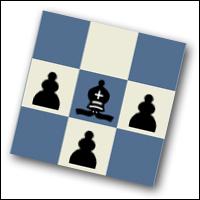
Two Criminals, Part Three
The typical idea of trading the fianchettoed bishop by playing Be3,Qd2 and Bh6 is so common that many chess players execute it almost automatically. Indeed, how can you argue with a game like this:
It is the games like this firmly engraved into people's mind the idea that a trade of the fianchettoed bishop equals to a checkmate. Indeed, in many positions you must keep your bishop even if it will cost you some material. (We discussed such cases here.)
Yet, in the situations where the immediate attack against your opponent's king is not possible, you might want to reconsider the Bh6 trade since it can easily backfire like in the next game:
Notice how White suffered throughout the whole game due to the permanent weakness of his dark squares which was caused by the trade of his own dark squared bishop. These days it is a very common technical idea to trade your own fianchettoed bishop to weaken your opponent's position, but about 50 years ago even the world's top chess players were not aware of it. Look how helpless was Romanian GM Gheorghiu (who was definetely in the top 20 in the world at that time) in the following game:
This time Black weakened all his light squares by the unsound Bh3 trade.

As a matter of fact, some opening lines are based on the idea of trading your own fianchettoed bishop! Such a trade makes your opponent's position vulnerable on the squares of the same color as the bishops which were swapped:
And sometimes you can see a paradoxical situation where one player offers to trade his own fianchettoed bishop and his opponent avoids the trade!
But before you rush to part with your own fianchettoed bishop, please remember that after all, this bishop is the main defender of your king and just one spark can cause some serious fire! Black definitely forgot about it in the next game:
Now let me briefly sum up the subject that we discussed in this series of articles. Some 60-70 years ago a trade of the fianchettoed bishop was considered a big taboo. Today people are more open minded and frequently don't mind to trade their fianchettoed bishop if it brings certain positional benefits. But no matter what advantages you achieve by such a trade, never forget that you always pay a price: you king gets vulnerable!
RELATED STUDY MATERIAL
- Read Part 1 of this series;
- Read WIM Iryna Zenyuk's article Exchanging a Fianchettoed Bishop;
- Watch videos about weak and strong squares;
- Check out this Chess Mentor lesson on weak squares around a castled king.



